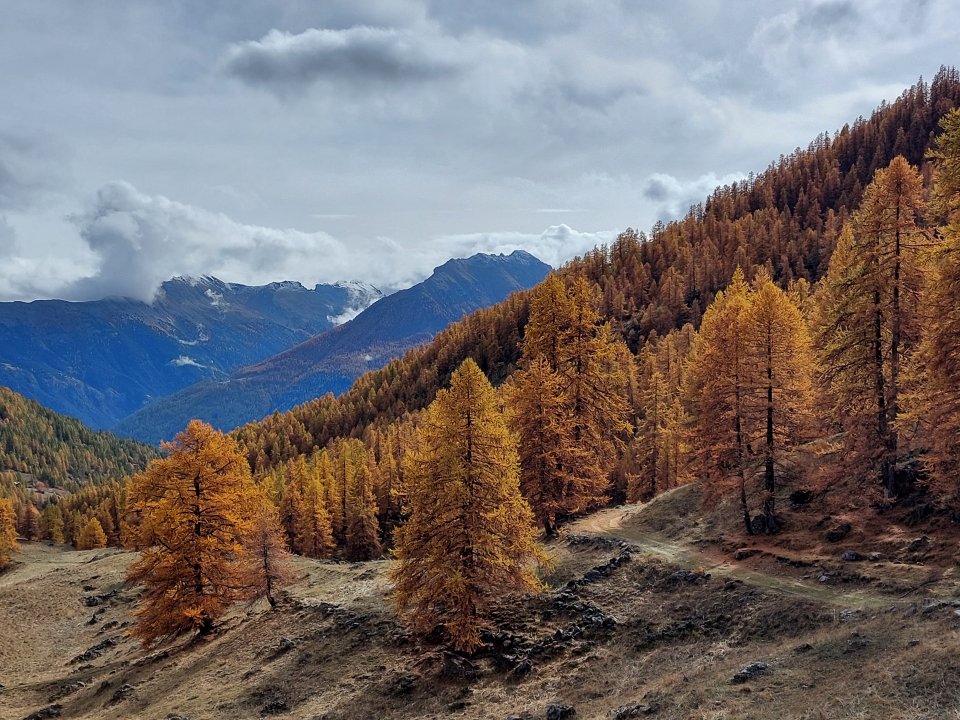
The Partias Regional Nature Reserve is a 685-hectare mountain area rising from an altitude of 1 600 m to 2 900 m in the Briançonnais region (Hautes-Alpes department). LPO PACA and the municipality of Puy-Saint-André have been appointed co-management bodies by the Provence Alpes-Côte d’Azur region. The first management plan for the period 2011 - 2016 identified the conservation of forest species as a priority. The Reserve is home to the Swiss Pine, a hardy and rare conifer adapted to high mountain habitats, growing at altitudes of between 1 700 and ,500 m. This central European mountain species is threatened by pressure from sheep grazing, its slow growth rate and competition with Larch, a species favoured for forestry. Its disappearance has a negative impact on the biological diversity of mountain forests.
- For adapting to climate change : improve the forest resistance to heat waves and parasites and prevent soil erosion.
- For biodiversity : diversify and renature the forest massif by restocking with Swiss Pine and conserving local biodiversity, in particular heritage flora and fauna.
- For the local area : preserve silvicultural resources and develop eco-tourism activities.
Begun in 2018, the work involved :
- Diversifying the forest massifs by restocking with Swiss Pine (planting 3 000 saplings over 7 hectares through a 10-day participative worksite involving 148 volunteers). Llamas and horses carried the equipment to the area. To reduce the pressure of pastoral activities, a programme of mediation and support for livestock farmers was developed to facilitate the colonisation of the upper part of the forest (where grazing is forbidden for at least 20 years).
- Tagging 300 Swiss Pines out of the 3 000 trees planted in late 2018, i.e. 10 %, to monitor their reestablishment.
- Restore the ropes demarcating the anti-disturbance areas for Black Grouse
BENEFITS REGARDING TARGETED ADAPTATION ISSUES
- Preventing soil erosion.
- Diversifying tree species and thus improving the resilience of the forest massif to climatic conditions.
OTHER BENEFITS
- Improving the massif’s long-term carbon sequestration potential.
- Maintaining forest cover to disperse wolf populations and thus facilitating cohabitation with pastoral activities.
BENEFITS FOR BIODIVERSITY
- Increased habitats for populations of heritage species, in particular Black Grouse.
- Reduced disturbance from sheep farming and tourism.
- Developing climate change adaptation; improving risk management and resilience
- Reduce risk of damages from drought
- Developing climate change mitigation
- Carbon sequestration and storage
- Increase Biodiversity
- Increased cultural richness and biodiversity
TECHNICAL ASPECTS AND PROJECT DESIGN
- Choosing species adapted to the habitat : Swiss Pine is not the most resistant species to climate change, but it is the most adapted to mountain habitats. The plants come from a nursery in the Hautes-Alpes, from the Bois des Ayes (8-10 years old) and Piedmont in Italy (3-4 years old).
- Taking local issues into account : the planting area was chosen on the basis of avalanche paths, grazed or forestry plots and the habitats of Black Grouse, which feed on Swiss Pine needles and can therefore find refuge there in winter. Priority was given to well-lit forest edges and wooded slopes.
- Pooling equipment : for this type of participative work, you need pickaxes and heavy-load carriers provided free of charge by local organisations (CPIE, SIVM de Serre Chevalier, ONF, etc.).
- Communicating extensively to recruit volunteers : the best information vector for recruiting volunteers is the network of partners or by email, LPO volunteers and word of mouth. Communication via posters in the municipality, the distribution of flyers, through the press and social networks also proved effective in mobilising volunteers.
STAKEHOLDER COMMITMENT
- Public consultation : sharing and raising awareness of forest issues with the general public and explaining the Nature 2050 ecological restoration project.
- Visitor awareness : alerting groups to the risk of Black Grouse disturbance in both winter and summer.
- Reconciling uses : organising consultation meetings with livestock farmers to reduce the pressure from sheep on planted trees.
MONITORING AND REPLICABILITY OF THE ACTION
- Long term management : drawing up a 2021-2030 management plan for the RNR with monitoring actions for the Nature 2050 project.
- Monitoring saplings : of the 3000 saplings, we chose to monitor 300 (117 large 8 to 10-year-old saplings and 183 small 3 to 4-year-old saplings). In 2022, 70% of these saplings were still alive. The small saplings proved to be more robust in the face of challenges such as the weather, animals and disease.
Nature 2050 Programme - CDC Biodiversité : 30 000 €
In addition, the Partias RNR and CDC Biodiversité will cover the cost of maintaining and monitoring the project until 2050.
- 13. Climate Action
- 15. Life On Land
